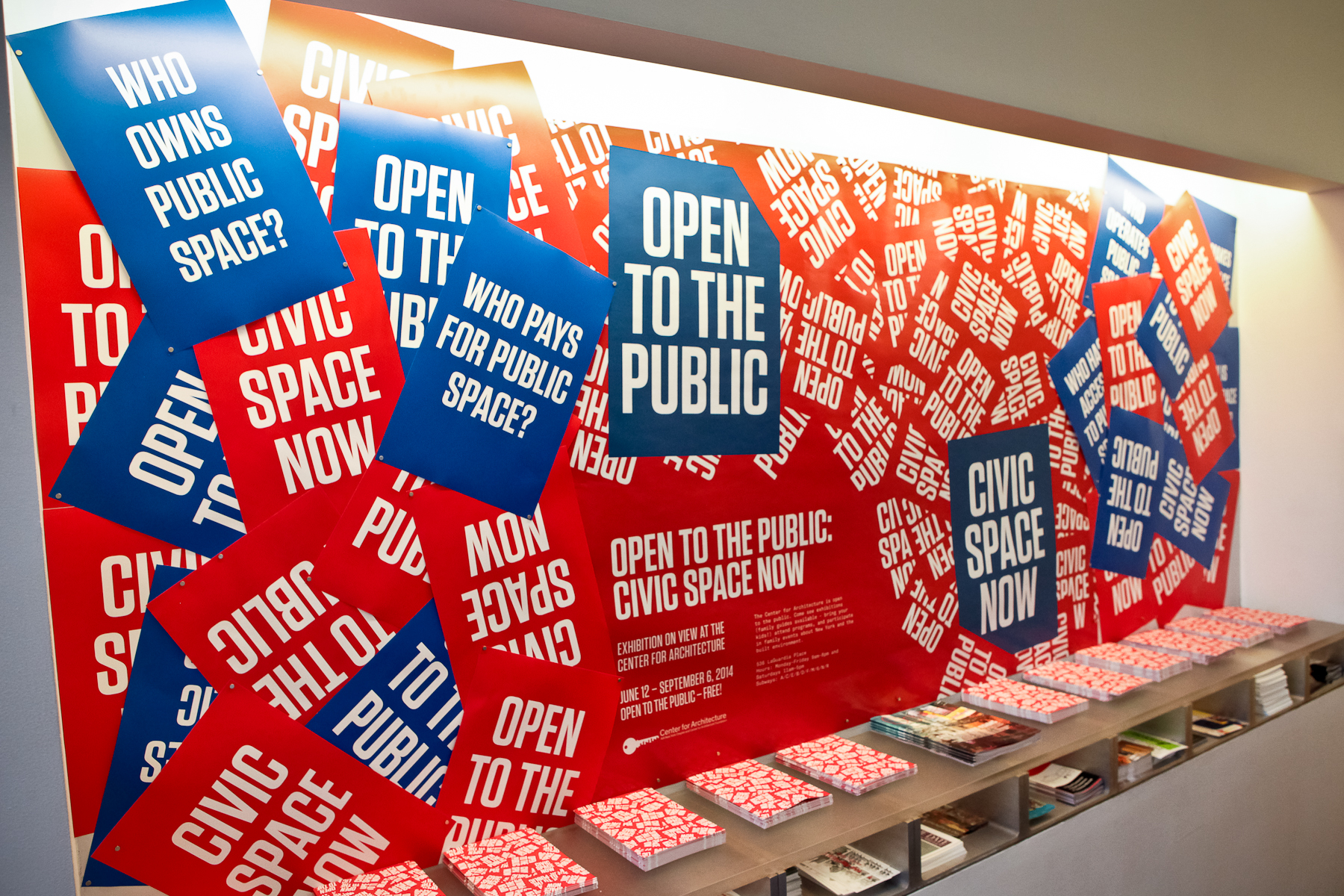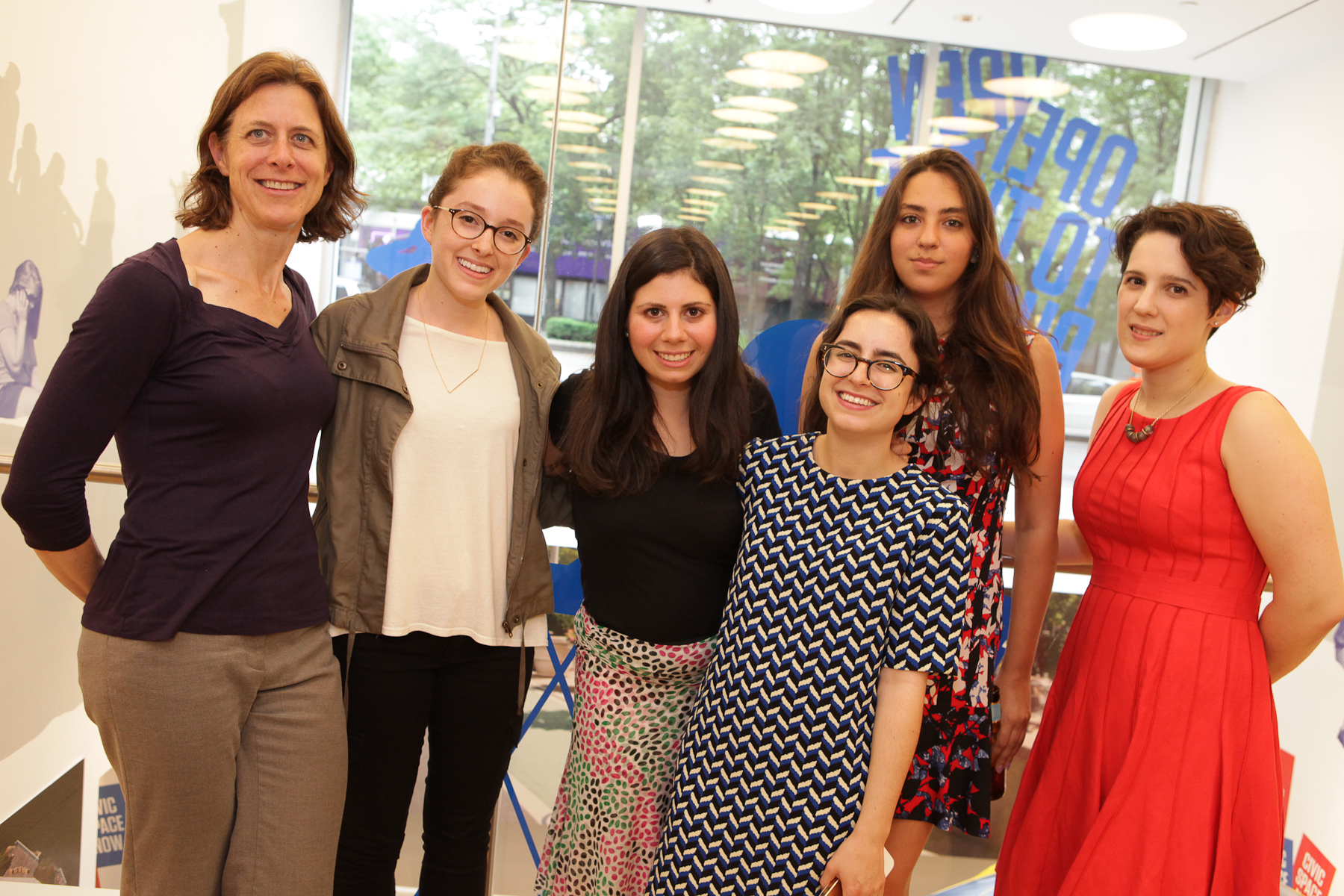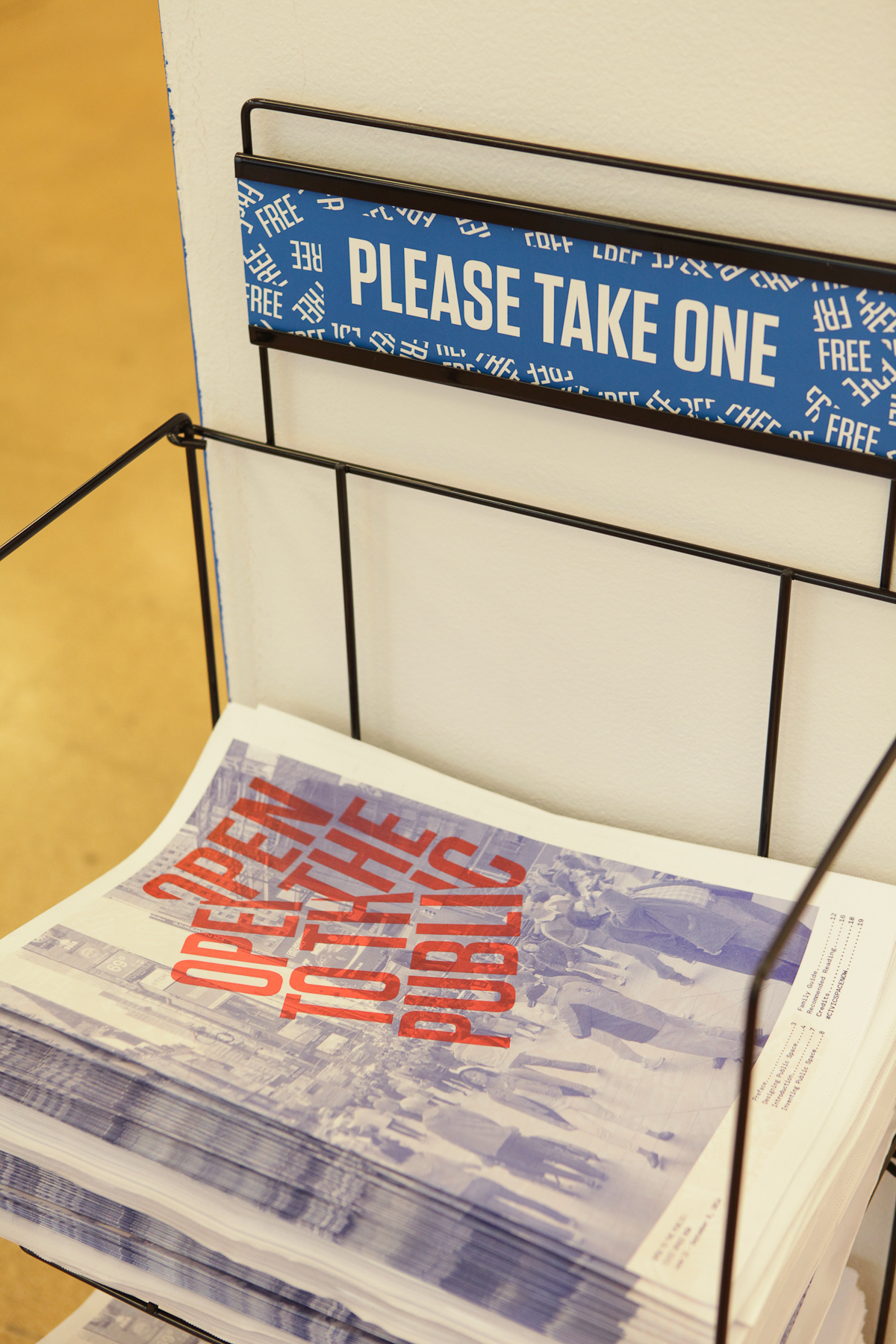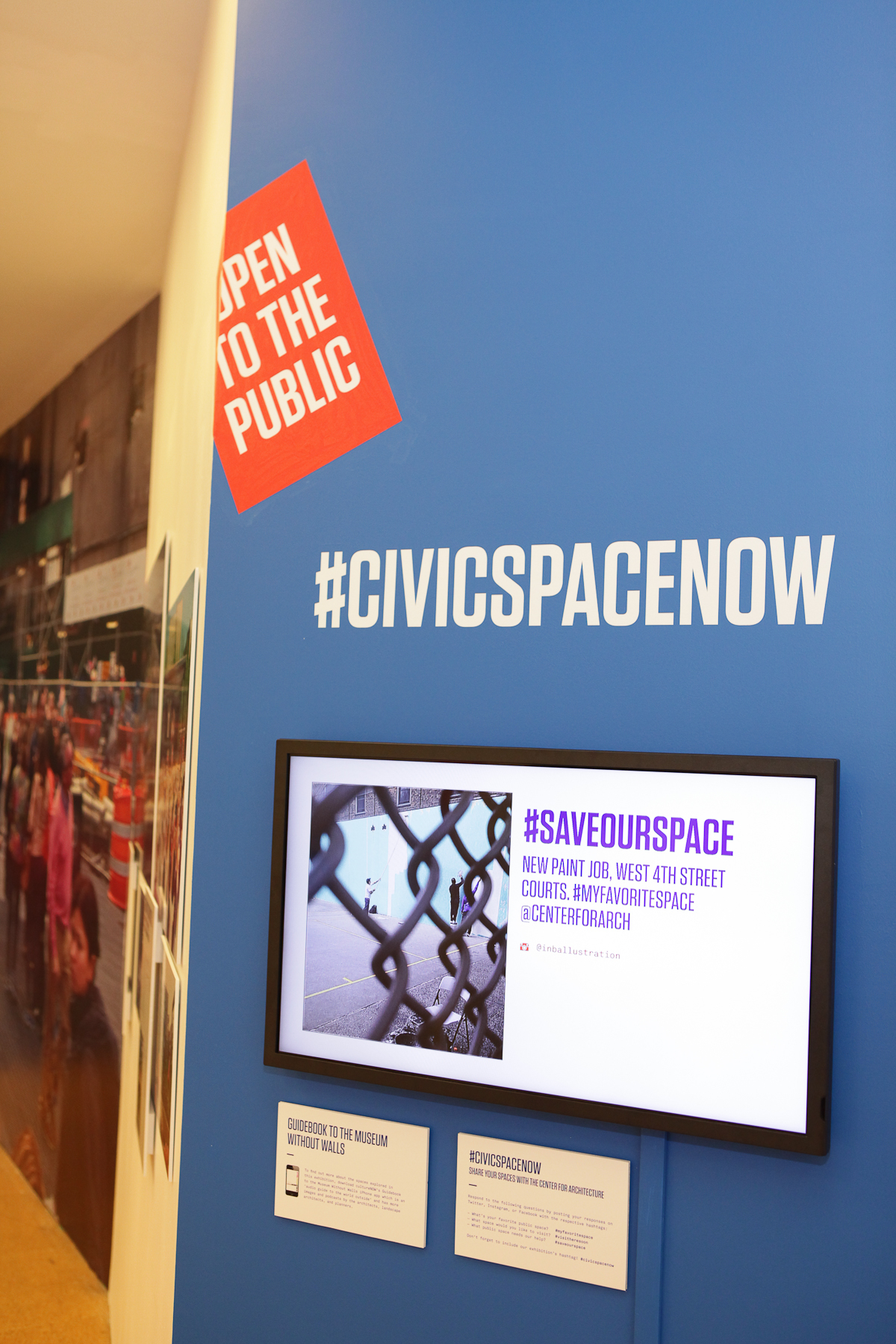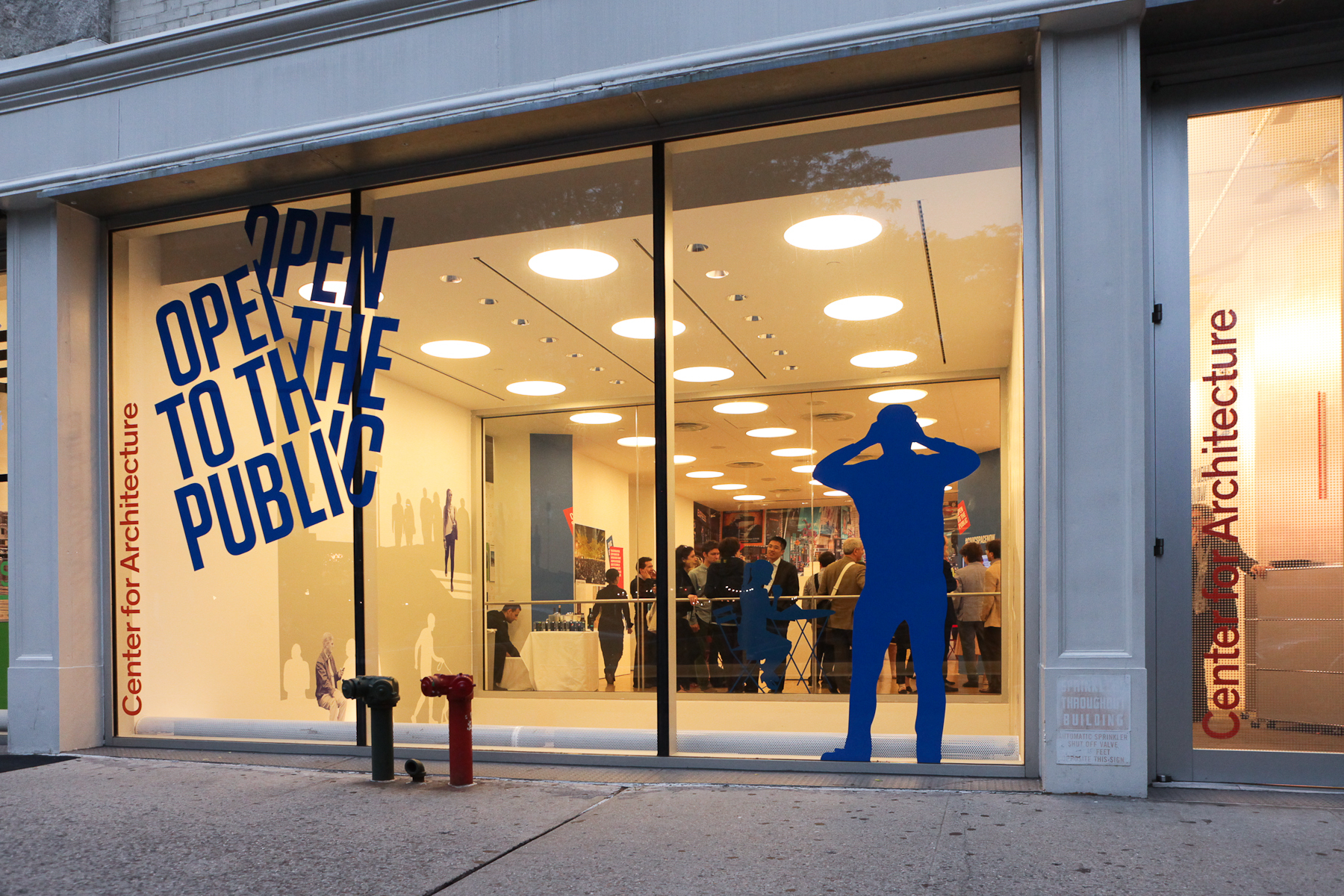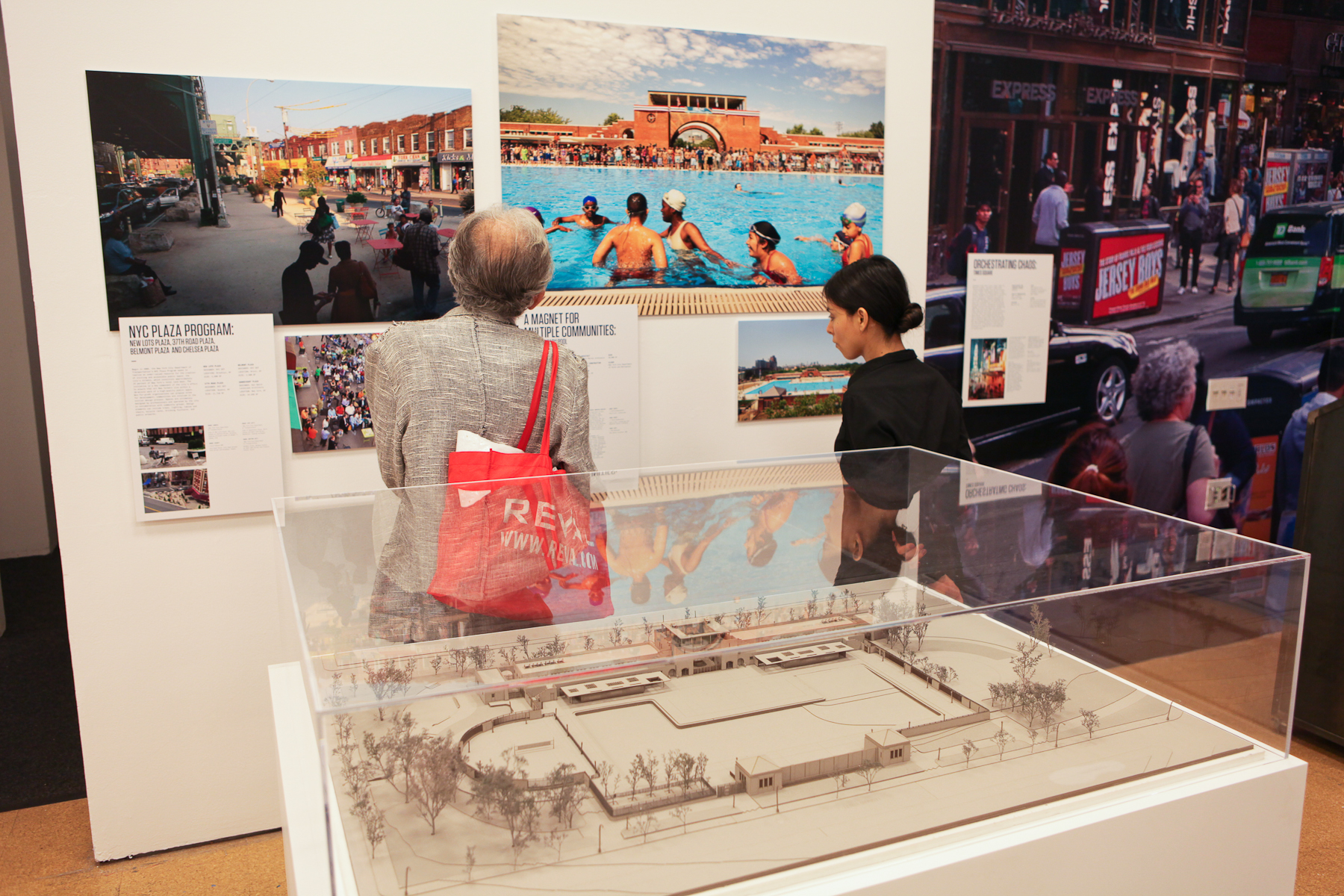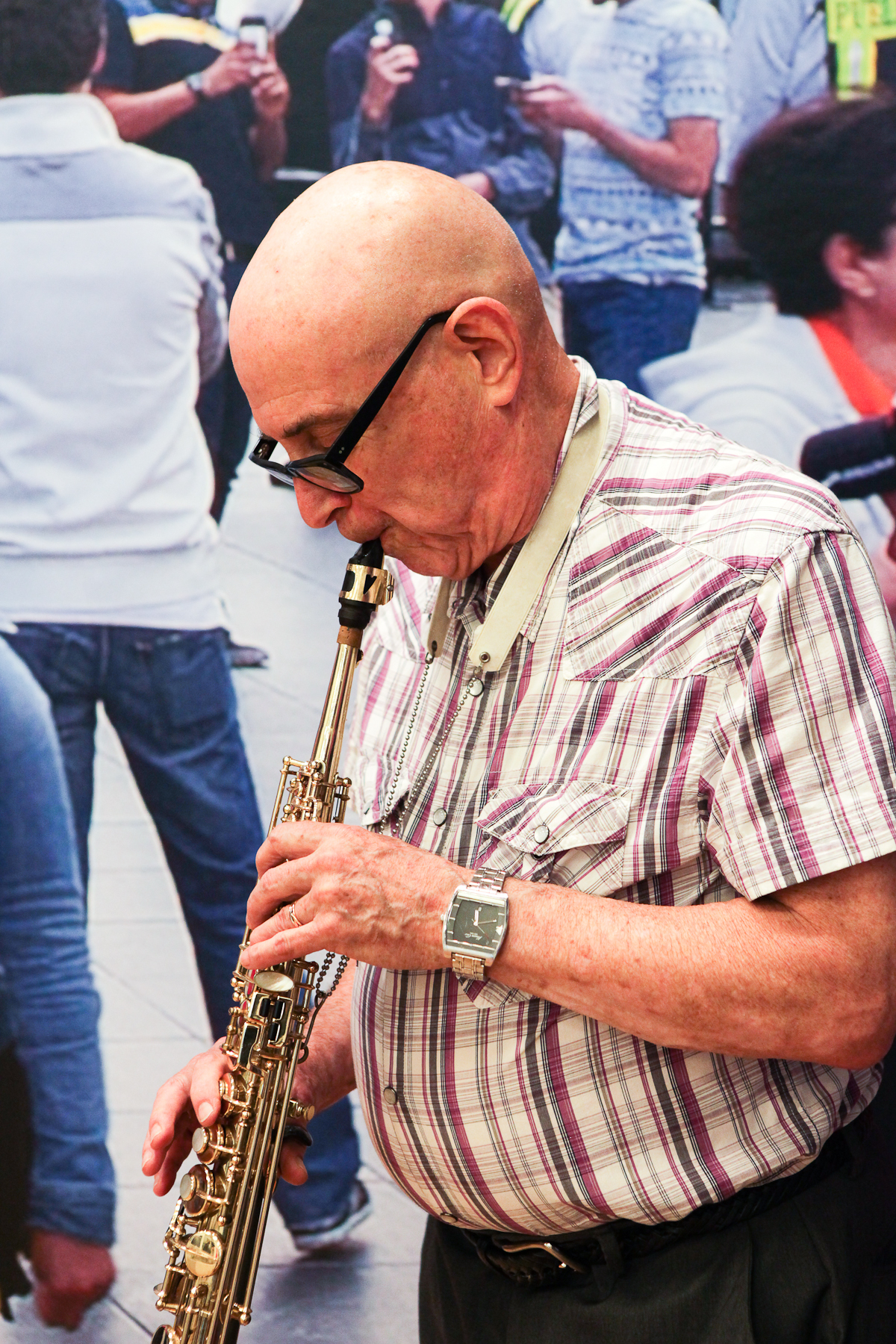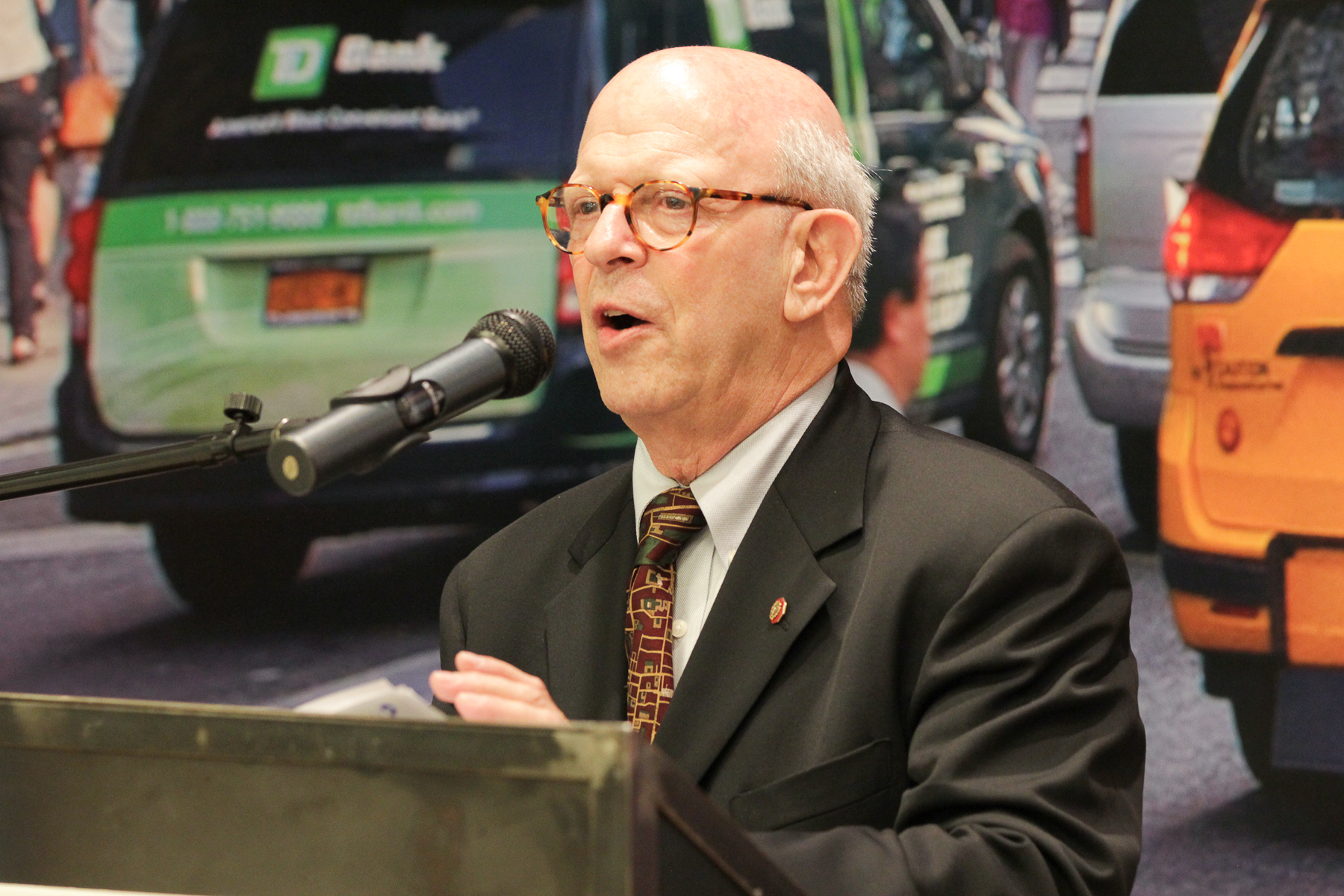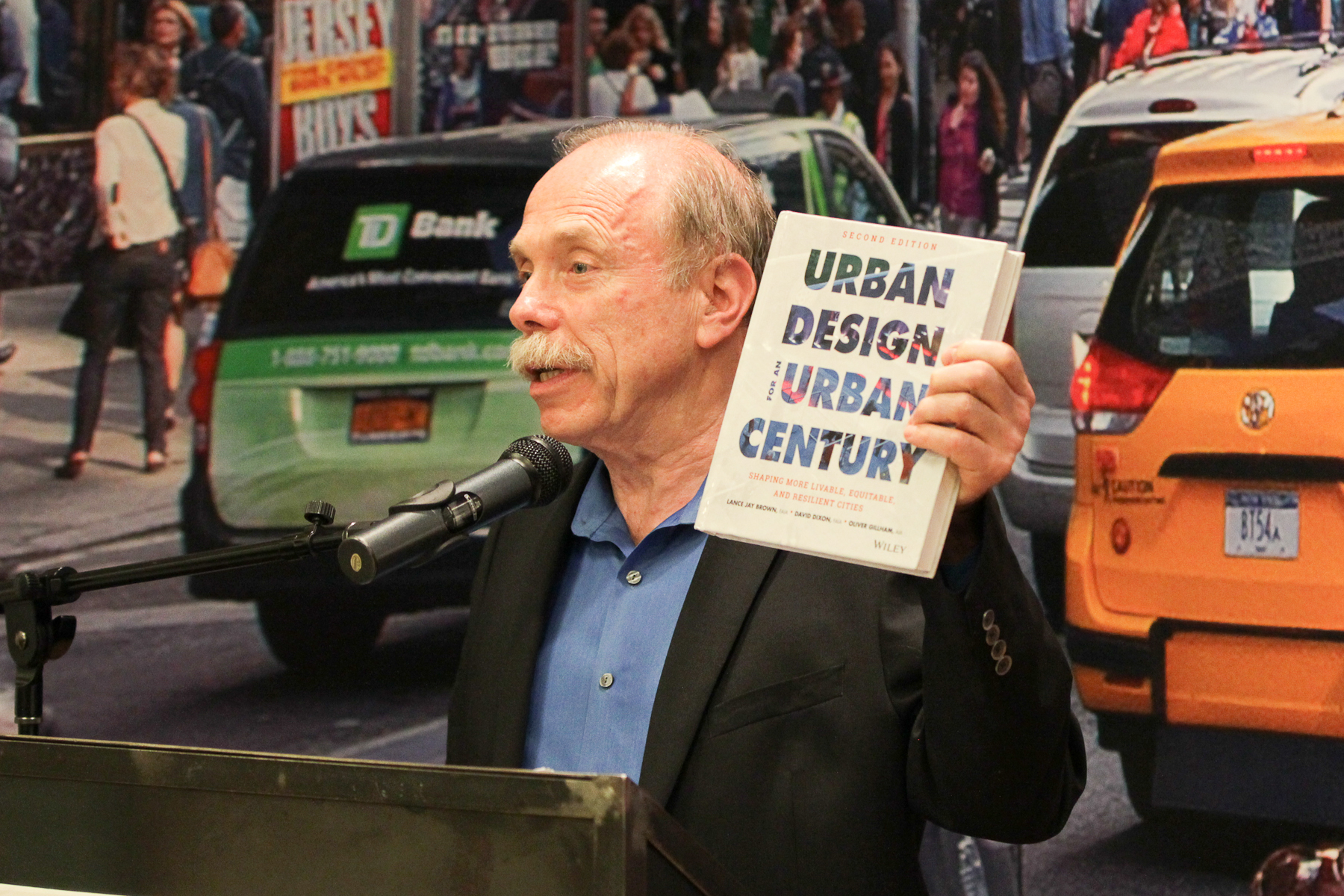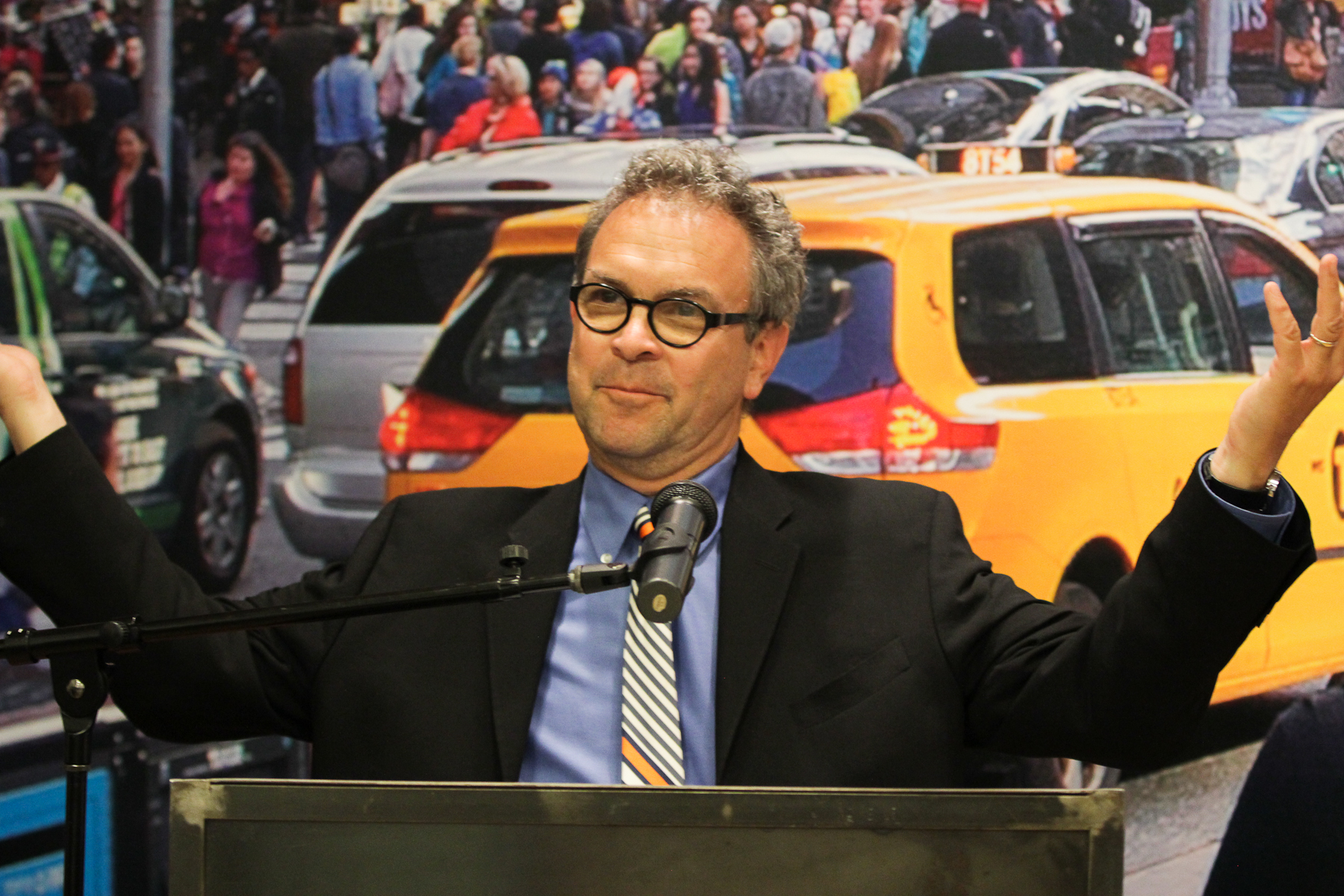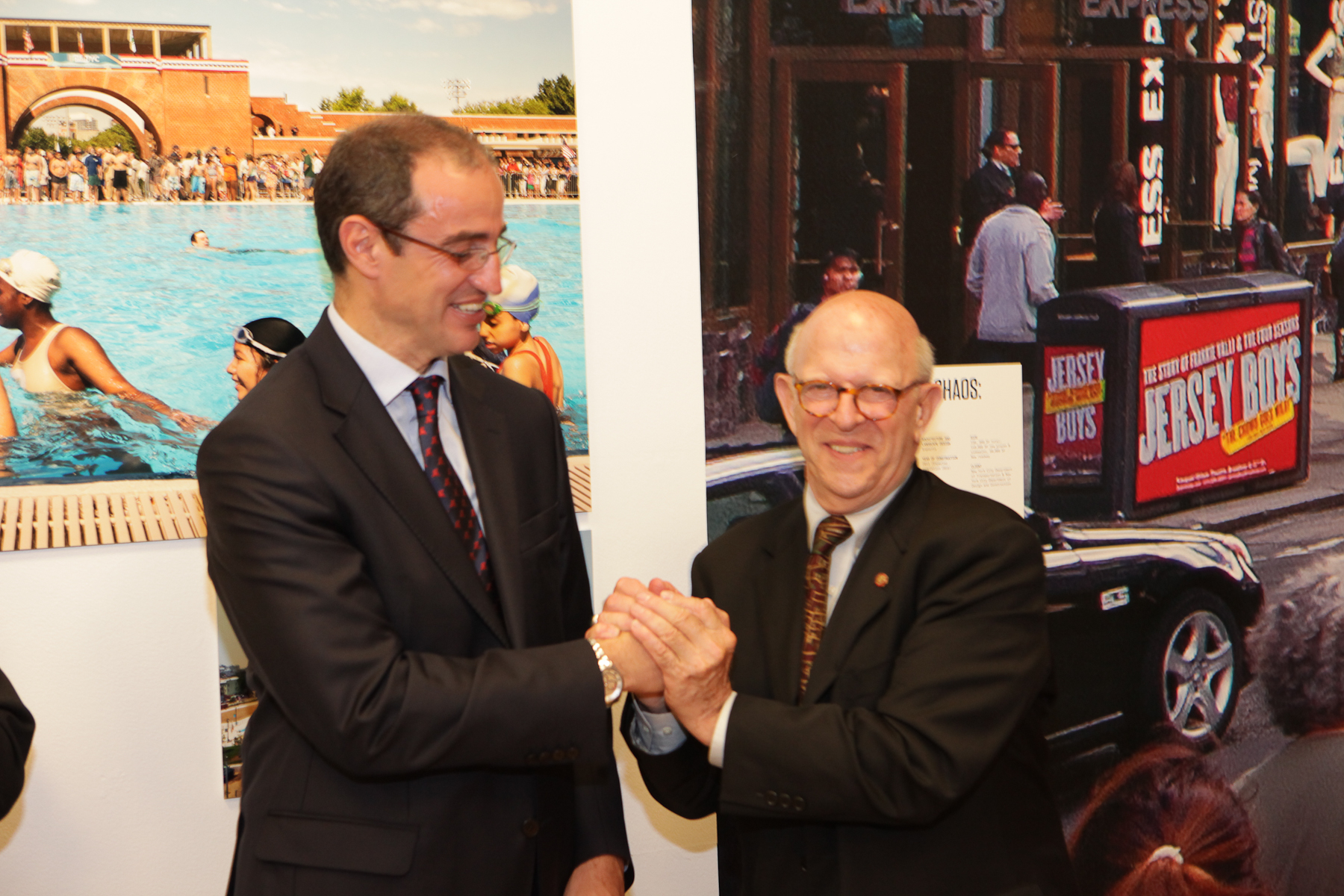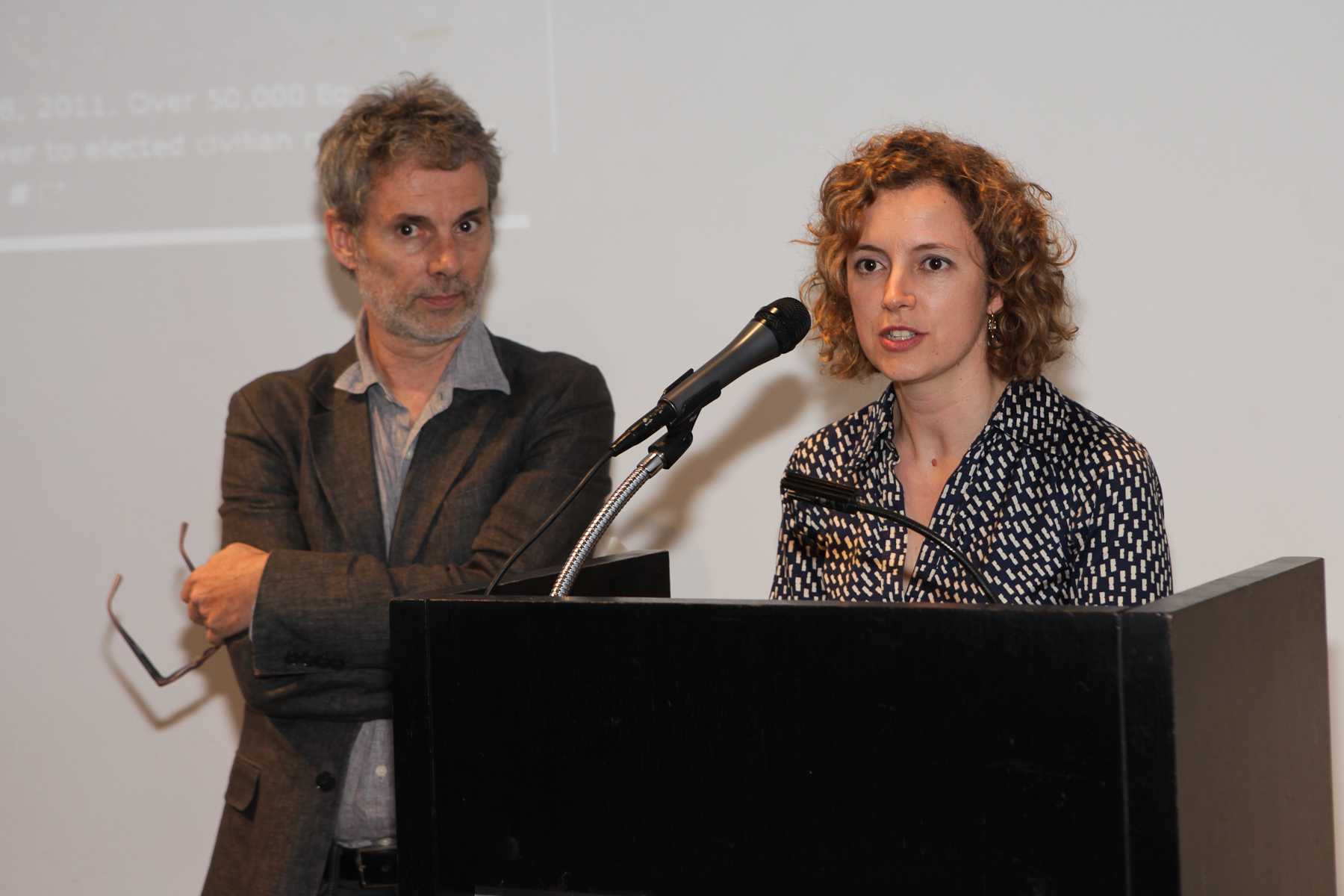by Claire Webb
“Open to the Public: Civic Space Now,” which opened at the Center for Architecture on 06.12.14, offers multifarious interpretations of public space. This satisfying exhibition muses about both the philosophical and the practical, showing a spectrum of how public space is used, “discovered,” carved out, left to languish, and sometimes revitalized. It folds perfectly into and clearly articulates the Center’s year-long presidential theme “Civic Spirit, Civic Vision.”
Despite the breadth of the exhibition, the show manages to link to important historical moments of civic space, starting at its inception, when Greeks and Romans made public space a tenet of their value systems. The “agora” was a nexus for politics and intrigue, as well as relaxation and informal congregation (we still use the word today, in “agoraphobia,” the fear of public/open environments). It also points out that while humans have always craved public space and have prioritized it, the very definition is vexingly ephemeral and resists a singular expression.
The entire back wall pops with an no-bleed photo blow-up of Times Square. The appropriately dominating image shows just how much that space has changed recently, morphing from a congested, taxi-dominated hell-pit to a more breathable space (though tourists still joyously clog Broadway). This was largely due to the city circumventing traffic and Snøhetta’s reimagining of the space. The first floor also highlights Zucotti Park, where the self-proclaimed 99% protested the scions of Wall Street, and McCarren Park in Williamsburg, which blended different communities in its updated, thriving pool.
“Open to the Public: Civic Space Now” also brings public engagement to the “right now”: a screen shows uploaded Twitter images from Florence to Gowanus, accompanied by #civicspacenow. Meandering footprints on the floor lead visitors to a different view of each object and plaque, creating a pull of engagement and a “selfie” moment by monumental images – the essential value the exhibition showcases.
The exhibition shows more well-made public spaces on the lower floor. The 9/11 Memorial “dramatically interrupts Lower Manhattan’s dense urban fabric,” and minimalist landscaping naturally facilitates contemplation. The High Line, surging with visitors (there was a red carpet at the opening, par for the course in NYC), speaks to our curiosity to explore underused, then revitalized spaces in unlikely places. Public space need not be stationary: new bike lanes and Citi Bikes, both championed by former NYC Department of Transportation Commissioner Janette Sadik-Khan and former Mayor Michael Bloomberg, now course through the dense streets. Elegantly designed paths at Chicago’s Lincoln Park Zoo create a lovely landscape that is pricked with glorious views of the city’s skyline.
The exhibition opening reception ended on a more philosophical note, probing visitors to think about “What do we even mean by ’public’? What makes public space compelling and enjoyable?” Because most of us take public space for granted – indeed we should view it as a right, not a luxury – the exhibition also calls attention to its fragility, warning that “public space, often slow in the making, is easily compromised.” Lance Jay Brown, FAIA, AIANY 2014 President, reflected on the hard-to-pin-down nature of that space, saying, “It is architecture, art, landscape, and urbanism. It can be measured or not, colorful or not, big or small, as long as it is.” This isn’t an overly grandiose or indulgent concept of public space – it is that important, and needs to be explained in that way so we don’t lose sight of space that is communal, nourishing, and naturally anthropological.
Claire Webb studied astronomy and philosophy at Vassar College, but an interest in art history and architecture led her to the position of Marketing Director at Edelman Sultan Knox Wood / Architects.
Event: Exhibition Opening | Open to the Public: Civic Space Now
Location: Center for Architecture, 06.12.14
Speakers: Lance Jay Brown, FAIA, 2014 President, AIANY; Thomas Mellins, Curator; David Dixon, FAIA, Senior Principal, Stantec Urban Group Leader; Rick Bell, FAIA, Executive Director, AIANY; and Antoni Vives i Tomàs, Deputy Mayor of Barcelona
Curator: Thomas Mellins
Designer: Athletics
Organizers: Center for Architecture
Sponsors: National Endowment for the Arts (Grant); FXFOWLE, Pei Cobb Freed & Partners Architects, Sciame (Patrons), CetraRuddy, Grimshaw Architects, Ennead Architects, Pelli Clarke Pelli Architects, Peter Gisolfi Associates, Robert A.M. Stern Architects, Skidmore, Owings & Merrill, Studio Daniel Libeskind, Thomas Phifer and Partners (Sponsors), Capalino + Company, Desai Chia Architecture, Handel Architects, Ibex Construction, Kohn Pedersen Fox Associates, New York Building Congress, Stephen B. Jacobs Group, Syska Hennessy Group, TEN Arquitectos, Thornton Tomasetti, Zetlin & De Chiara (Supporters)
